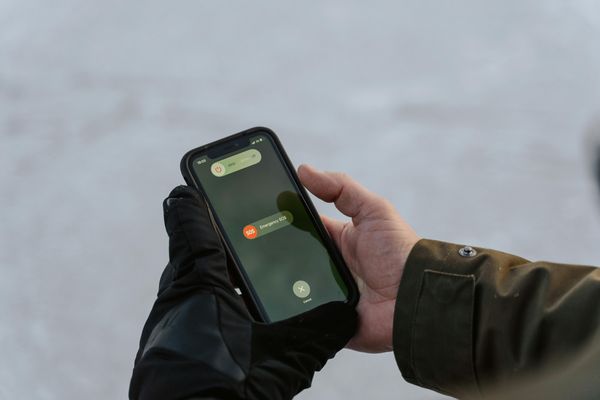Lone Worker Emergency Alert Systems: Ensuring Safety for Australia’s Remote Workforce

Lone Worker Emergency Alert Systems: Protecting Australia’s Isolated Workforce
In today’s evolving workplace landscape, lone worker safety has become increasingly critical, particularly in Australia where vast distances and remote operations are commonplace. A lone worker emergency alert system serves as a crucial lifeline for employees working in isolation, from mining sites in Western Australia to remote healthcare workers in the Northern Territory.
This article delves into the challenges faced by lone workers, the technology behind emergency alert systems, and the future of worker safety in Australia. Whether you manage a team of remote employees or are interested in workplace safety, this guide is for you.
Estimated Reading Time: 8 minutes
Key Takeaways
- Understanding the risks inherent to lone workers in Australia.
- Exploring modern emergency alert systems and their functionalities.
- Critical safety tools including panic buttons and SOS devices.
- The importance of compliance with Australian WHS regulations.
- Future developments in lone worker safety technology.
Table of Contents
- Understanding the Risks Faced by Lone Workers
- Understanding Lone Worker Emergency Alert Systems
- Panic Buttons for Remote Workers
- SOS Devices for Isolated Employees
- Man Down Detection System
- Automated Incident Reporting
- Real-Time Location Tracking
- Integration of Safety Tools
- Choosing the Right System for Australian Organizations
- The Australian Context and Future Developments
- Conclusion
Understanding the Risks Faced by Lone Workers
Australian lone workers face unique challenges due to the country’s geographical expanse and diverse working environments. Common hazards include:
- Physical injuries from slips, trips, and falls
- Encounters with dangerous wildlife
- Exposure to extreme weather conditions
- Medical emergencies in remote locations
- Workplace violence or confrontation
- Vehicle breakdowns in isolated areas
The isolation factor significantly amplifies these risks. Without immediate access to help, a minor incident can quickly escalate into a life-threatening situation. [Source]
Understanding Lone Worker Emergency Alert Systems
Modern lone worker emergency alert systems combine sophisticated technology with practical functionality. These systems typically include:
- Wearable devices
- Mobile applications
- Centralized monitoring platforms
- GPS tracking capabilities
- Automated alert mechanisms
In Australia, these systems are particularly crucial due to recent legislative changes. The Work Health and Safety (WHS) laws now emphasize the importance of protecting lone workers, making these systems essential for compliance. [Source]
Panic Buttons for Remote Workers
Panic buttons represent a fundamental component of lone worker safety systems. These devices enable workers to:
- Instantly signal for help with one touch
- Discreetly alert emergency contacts
- Transmit their exact location
- Initiate two-way communication when possible
In Australia, industries such as healthcare and security have widely adopted panic button solutions, particularly following increased incidents of workplace violence. [Source]
SOS Devices for Isolated Employees
SOS devices have become increasingly sophisticated to meet Australian workplace needs. Modern devices offer:
- Real-time GPS tracking
- Extended battery life for remote locations
- Satellite connectivity for areas without mobile coverage
- Robust construction for harsh environments
These features are particularly relevant for Australia’s mining, agricultural, and conservation sectors, where workers often operate in extremely remote locations. [Source]
[Source]
Man Down Detection System
Man down detection systems have revolutionized worker safety through:
- Automatic fall detection
- Immobility sensing
- Immediate alert transmission
- Integration with emergency services
These systems are particularly valuable in Australia’s construction and mining industries, where falling hazards are significant risks. [Source]
[Source]
Automated Incident Reporting
The automation of incident reporting has streamlined safety procedures by:
- Instantly logging emergency events
- Maintaining detailed incident records
- Facilitating quick response coordination
- Supporting compliance documentation
This automation is crucial for meeting Australia’s strict workplace safety documentation requirements. [Source]
Real-Time Location Tracking
In Australia’s vast landscape, real-time location tracking is essential. Modern systems provide:
- Precise GPS positioning
- Geofencing capabilities
- Journey management tracking
- Location history recording
These features are particularly valuable for workers in remote Australian locations where traditional navigation methods may be unreliable. [Source]
Integration of Safety Tools
A comprehensive safety approach in Australia typically combines:
- Multiple alert mechanisms
- Various communication channels
- Different tracking technologies
- Automated and manual safety checks
This integrated approach ensures maximum protection across Australia’s diverse working environments. [Source]
Choosing the Right System for Australian Organizations
When selecting a lone worker emergency alert system, Australian organizations should consider:
- Coverage in remote areas
- Compliance with local regulations
- Integration with existing systems
- Scalability for growing operations
- Cost-effectiveness and ROI
Recent Changes in Australia:
- New WHS regulations requiring enhanced lone worker protection
- Increased focus on mental health support for isolated workers
- Growing adoption of digital safety solutions
- Enhanced requirements for remote worker monitoring
[Source]
The Australian Context and Future Developments
Australia’s unique challenges have driven significant innovations in lone worker safety:
- Development of systems specifically designed for remote areas
- Integration with emergency services across different states
- Enhanced satellite communication capabilities
- Improved battery life for extended remote operation
Upcoming developments include:
- AI-powered risk prediction
- Enhanced integration with emergency services
- Improved mental health monitoring capabilities
- Advanced environmental monitoring features
Conclusion
For Australian organizations, implementing effective lone worker emergency alert systems is not just about compliance—it’s about ensuring the safety and wellbeing of workers in one of the world’s most challenging working environments. With continuous technological advancement and stronger regulatory requirements, these systems will become increasingly sophisticated and essential.
Organizations must stay informed about the latest developments and ensure their chosen solutions meet both current needs and future requirements. The investment in such systems reflects a commitment to worker safety and demonstrates responsible business practice in Australia’s unique working environment.